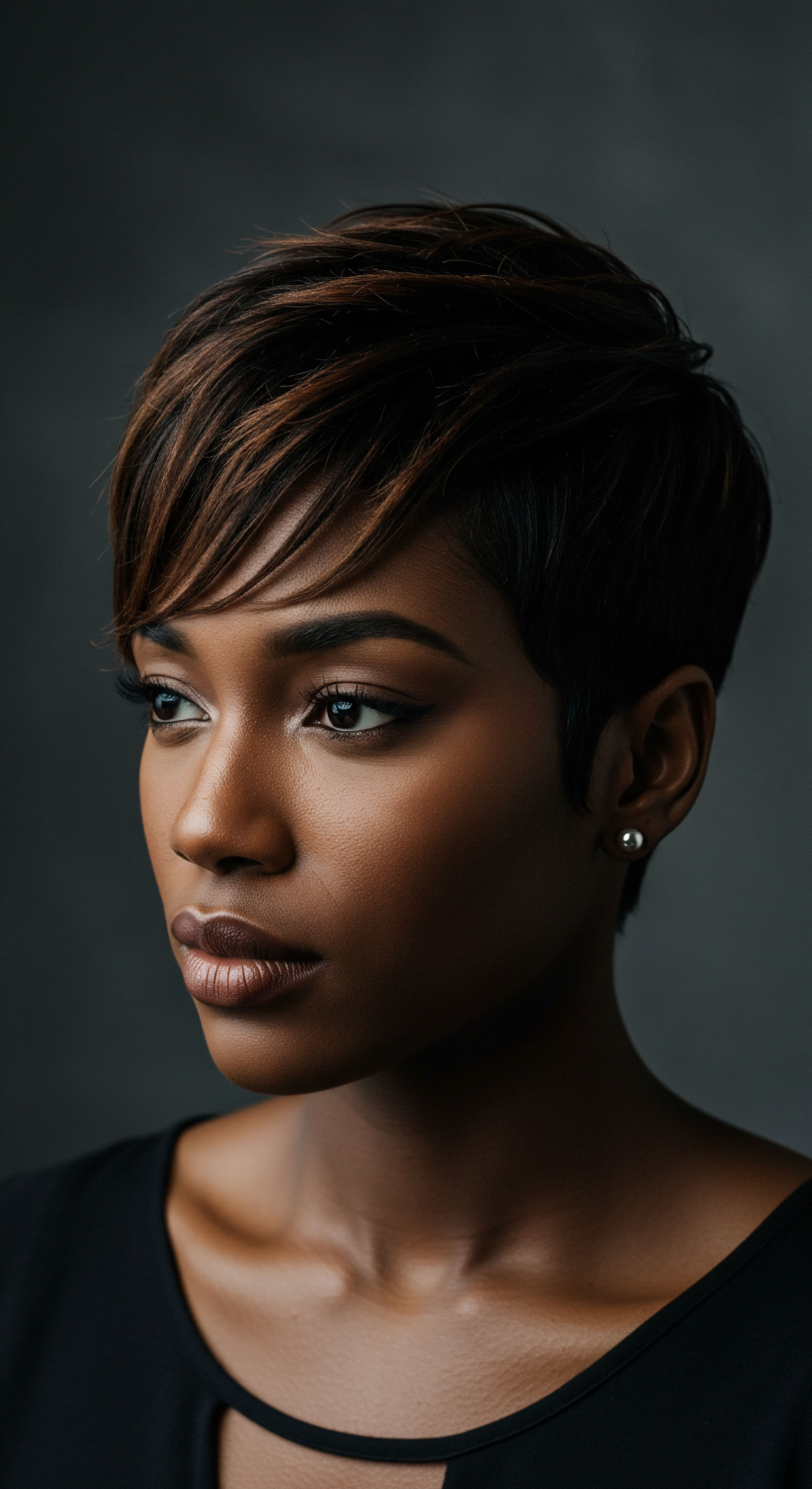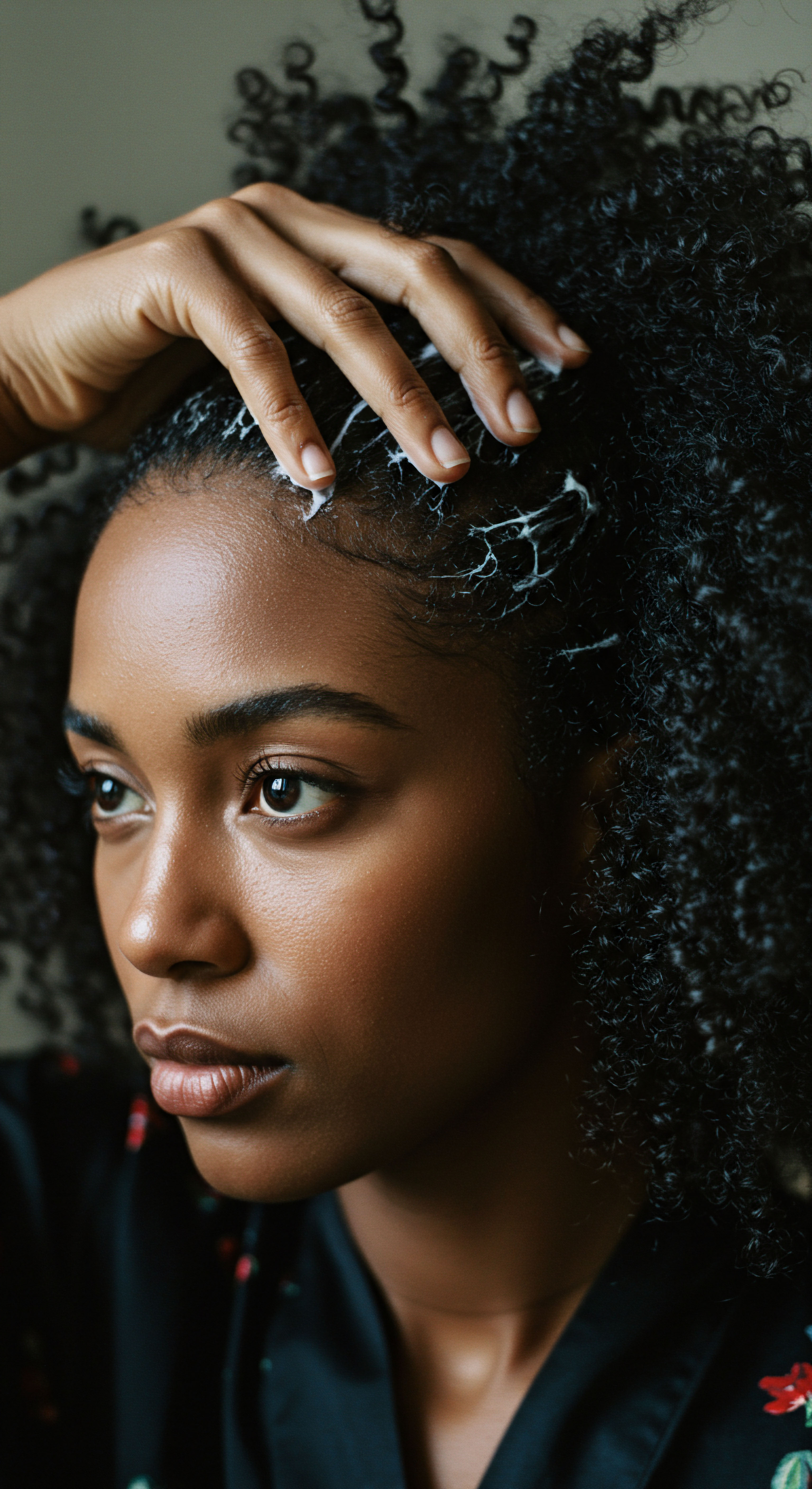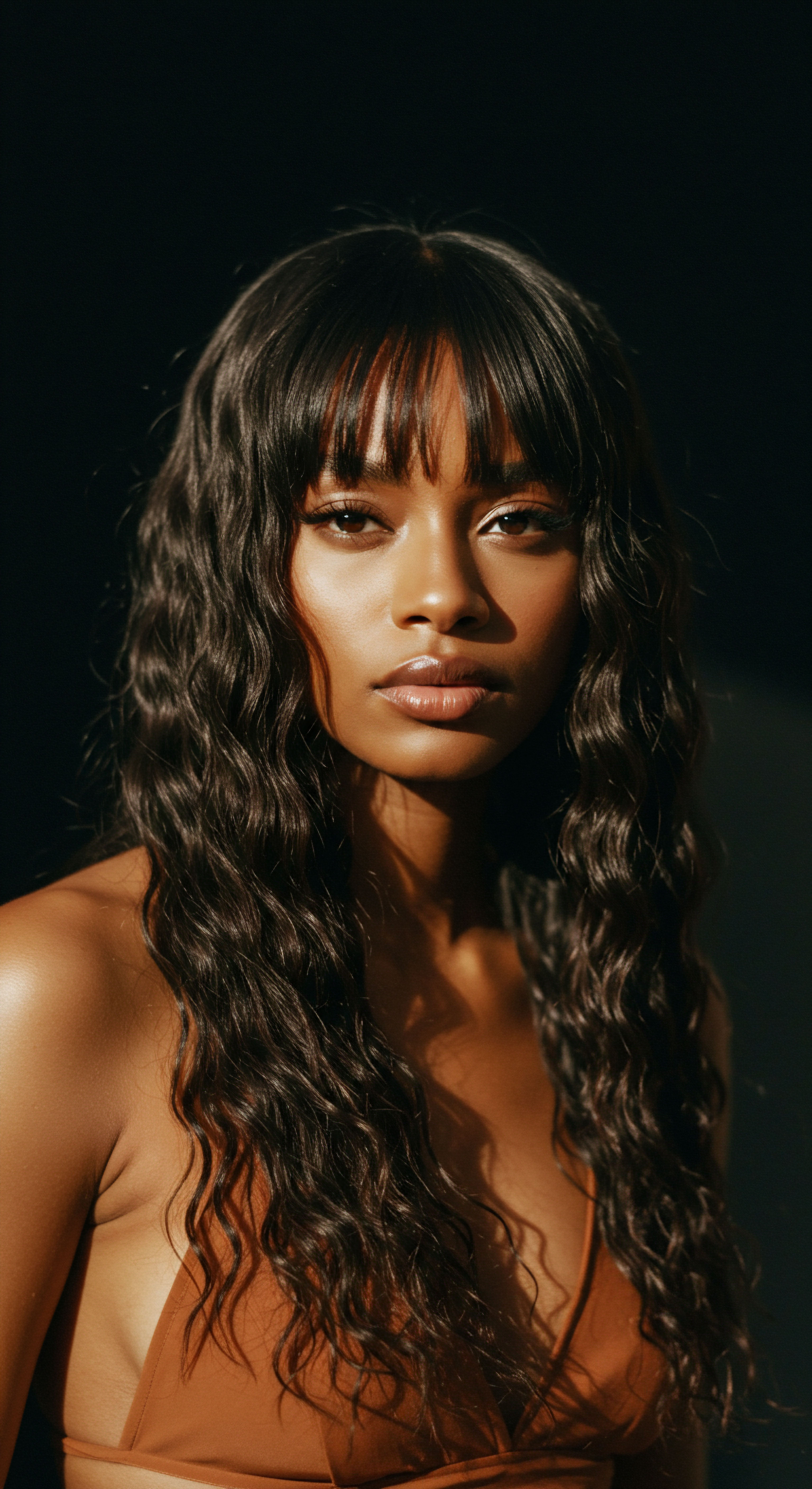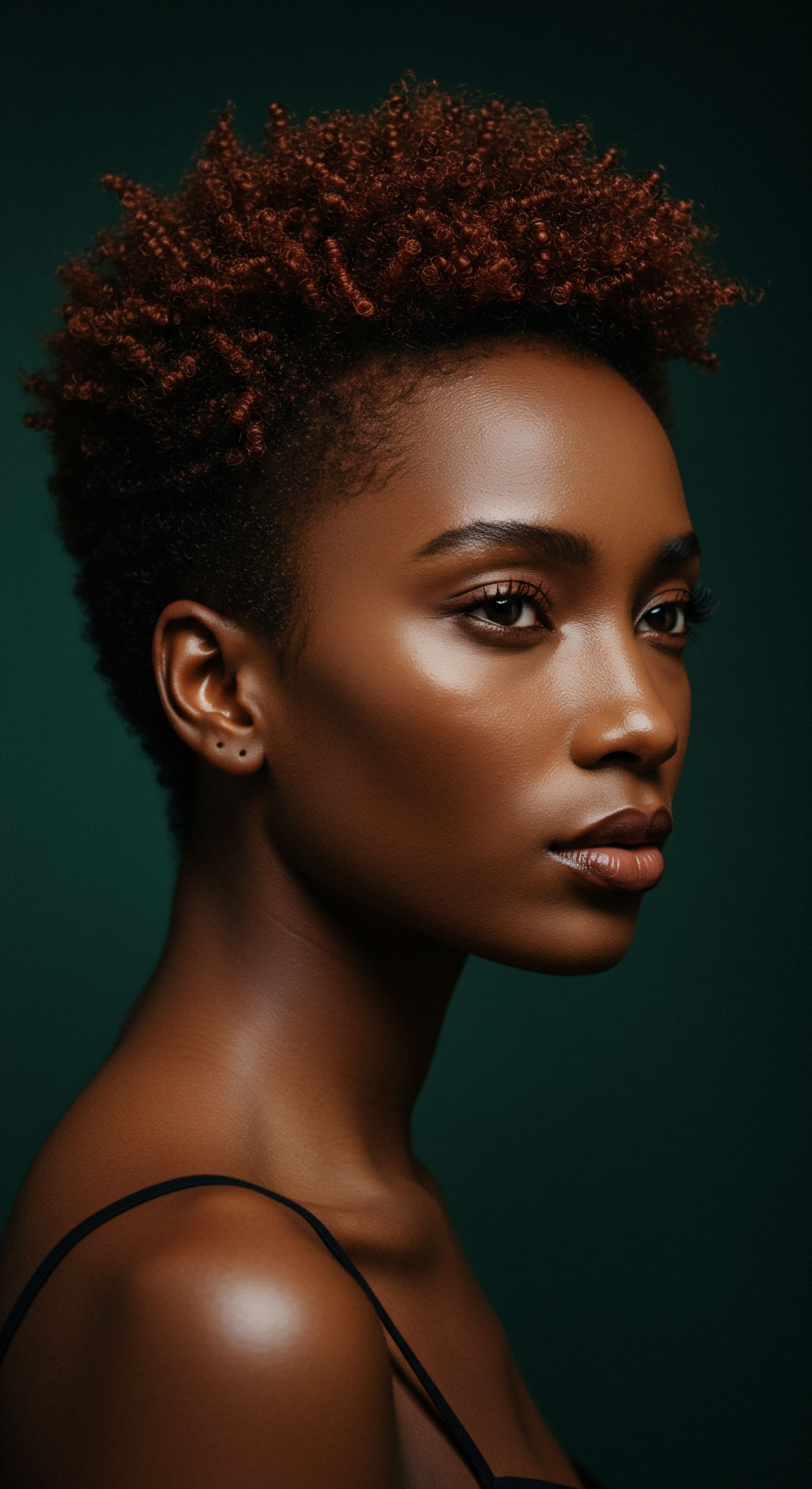
Roots
The journey to understanding textured hair, in all its coily, curly, and wavy splendor, often begins with a quiet observation ❉ its unique dance with moisture, its tendency to resist, to spring back, to surprise. For generations, individuals with textured hair have sought solace and solutions in the gifts of the earth, an intuitive knowing that predates modern laboratories. This wisdom, passed through hands and whispered across generations, speaks to a profound connection between the plant world and the vitality of our strands.
Unpacking the scientific advantages offered by specific plant-based ingredients for textured hair requires a patient hand, an appreciation for history, and a clear lens for science. We look to the very structure of textured hair, recognizing its distinct architecture as the starting point for unlocking its potential.

Hair’s Unique Structure and Its Demands
Textured hair possesses a distinct structural makeup, setting it apart from straighter hair types. The elliptical cross-section of the hair shaft, combined with its high curvature, means that natural oils produced by the scalp, known as sebum, struggle to travel down the strand. This inherent characteristic often results in dryness, particularly at the ends.
Moreover, the cuticle, the outermost protective layer of the hair, tends to lift more readily at the numerous bends and twists along the strand, making textured hair more susceptible to environmental stressors and mechanical damage. Understanding these foundational aspects is paramount to selecting ingredients that truly serve its needs.
Textured hair’s unique structure, with its elliptical cross-section and high curvature, predisposes it to dryness and increased cuticle lift.
The cortical cells, which form the bulk of the hair fiber and determine its strength and elasticity, exhibit a bilateral distribution in curly hair. This unevenness can create internal stresses when the hair is manipulated, contributing to its fragility. The higher density of disulfide bonds in Afro-textured hair, while contributing to its distinctive shape, also means it can be less resistant to mechanical extension and more prone to breakage if not cared for with precision.

What is the Role of Moisture in Textured Hair Vitality?
Moisture is the lifeblood of textured hair. Without adequate hydration, strands can become brittle, leading to breakage and a dull appearance. The high porosity often seen in textured hair means it can absorb water quickly, but also lose it just as fast.
This phenomenon, known as hygral fatigue—the repeated swelling and shrinking of the hair shaft as it absorbs and loses water—can weaken the hair over time. Plant-based ingredients, with their diverse molecular compositions, offer solutions to address this constant quest for hydration and resilience.
Consider the ancient practice of using Flaxseed. When hydrated, flaxseed releases a gel-like substance called mucilage. This mucilage, rich in polysaccharides, coats the hair strands, creating a natural barrier that helps to seal the cuticle and reduce moisture loss. This physical barrier is crucial for textured hair, which naturally struggles to retain hydration due to its structural characteristics.
Similarly, Aloe Vera, a succulent revered for millennia, holds a wealth of polysaccharides, proteins, and amino acids. Its composition, strikingly similar to keratin, the primary protein of hair, allows it to deeply penetrate the hair fiber. This deep penetration aids in providing and retaining moisture, leaving strands softer and more resilient. The humectant properties of aloe vera’s polysaccharides attract water from the atmosphere, binding it to the hair surface, which is particularly beneficial for curly hair types.
| Hair Characteristic Cross-Sectional Shape |
| Textured Hair Elliptical |
| General Implication Uneven sebum distribution, increased dryness |
| Hair Characteristic Curl Pattern |
| Textured Hair High curvature, tight coils |
| General Implication Mechanical stress points, increased tangling |
| Hair Characteristic Cuticle Layer |
| Textured Hair Tends to lift at bends |
| General Implication Higher susceptibility to damage and moisture loss |
| Hair Characteristic Disulfide Bonds |
| Textured Hair Higher density |
| General Implication Unique shape, but can be less resistant to extension |

Ritual
Stepping from the foundational understanding of textured hair, we now turn our attention to the deliberate, mindful practices that transform scientific insight into daily care. The choice of plant-based ingredients in our hair rituals is not merely about application; it is a thoughtful engagement with the very life force of botanicals, a recognition of their ability to support and sustain the unique needs of curls and coils. This segment invites us to consider how these earth-derived allies integrate into the routines that define our hair’s health and beauty, moving beyond simple surface solutions to truly nourish from within.

Deep Hydration and Lipid Balance
Textured hair, prone to dryness, thrives on ingredients that offer profound hydration and help to balance its natural lipid content. While Afro-textured hair has a higher overall lipid content, its structure often leads to moisture loss. This makes the selection of plant-based oils and butters with specific molecular structures and fatty acid profiles particularly significant.
Shea Butter, derived from the nuts of the African shea tree, stands as a testament to nature’s generosity. It is rich in vitamins A, E, and F, alongside essential fatty acids like oleic and linoleic acid. These components allow shea butter to penetrate the hair shaft, locking in moisture and forming a protective barrier that helps prevent dryness and breakage.
Its ability to smooth the hair cuticle also contributes to reducing frizz and adding shine. For textured hair, which benefits from a sealant to retain moisture, shea butter serves as an exceptional choice.
Plant-based oils and butters offer deep hydration and lipid support crucial for textured hair’s unique moisture needs.
Another remarkable botanical is Argan Oil. With a smaller molecular size compared to heavier oils, argan oil can penetrate the hair fiber more deeply, moisturizing from the inside rather than simply coating the surface. It is abundant in unsaturated fatty acids, such as oleic and linoleic acid, and antioxidants like vitamin E.
These elements hydrate the hair, prevent water loss, and neutralize free radicals, offering protection for both hair follicles and the scalp. Argan oil is particularly effective for textured hair in taming frizz and flyaways, sealing hair cuticles to lie flat, and enhancing overall shine.
- Shea Butter ❉ A rich emollient with vitamins A, E, F, and fatty acids, ideal for deep moisture and sealing.
- Argan Oil ❉ A lightweight oil with small molecules, penetrating deeply to hydrate, smooth frizz, and protect.
- Aloe Vera ❉ Contains polysaccharides and amino acids, offering humectant properties and structural support.

Protein Reinforcement and Elasticity
Hair, composed primarily of keratin protein, requires external protein support to maintain its strength and elasticity, especially for textured strands that are more prone to mechanical stress. Plant-based proteins offer a gentle yet effective way to replenish these building blocks without causing stiffness or over-proteinization, which can occur with synthetic or animal-derived proteins.
Hydrolyzed Plant Proteins, such as those derived from rice, wheat, or soy, are broken down into smaller units, allowing them to penetrate the hair shaft more easily. These proteins replace damaged protein molecules, thereby strengthening the hair and reducing breakage. They also play a role in improving hair’s elasticity, making it more resilient to manipulation and styling.
For example, Rice Protein, rich in amino acids, contributes to improved hair elasticity and offers protection against external aggressors like pollution and UV rays. Similarly, Wheat Protein helps to repair damaged hair by strengthening keratin fibers and aids in retaining moisture. These plant-derived components offer a balanced approach to protein support, ensuring that textured hair remains pliable and strong.
| Plant Protein Source Hydrolyzed Rice Protein |
| Key Benefits for Hair Improved elasticity, amino acid content, environmental protection |
| Plant Protein Source Hydrolyzed Wheat Protein |
| Key Benefits for Hair Keratin fiber strengthening, moisture retention, damage repair |
| Plant Protein Source Hydrolyzed Soy Protein |
| Key Benefits for Hair Increased hair thickness, volume, reduced breakage, split end sealing |

Relay
Our understanding of plant-based ingredients for textured hair extends beyond simple application, inviting a deeper look into the intricate interplay of botanical compounds, cellular responses, and cultural wisdom. How do these seemingly gentle gifts from the earth interact at a microscopic level to provide tangible advantages for curls and coils? This section delves into the less apparent complexities, drawing connections between scientific research and the lived experience of textured hair care, illuminating the profound impact of these natural allies.

Cellular Response and Scalp Health
The health of the scalp is a foundational element for thriving hair, and certain plant-based ingredients offer advantages that extend to the very cellular activity within the hair follicles. Beyond surface conditioning, these botanicals can influence the micro-environment of the scalp, promoting a balanced ecosystem conducive to growth and strength.
Consider Hibiscus Extract, derived from the vibrant blossoms of the hibiscus plant. It is rich in antioxidants like anthocyanins and flavonoids, which combat oxidative stress—a factor that can damage hair follicles and contribute to premature aging. More significantly, scientific studies indicate that hibiscus leaf extracts can stimulate hair follicle activity, prolonging the anagen, or active growth, phase of the hair cycle.
Research even suggests that hibiscus extract can be as effective as some medical treatments for baldness and hair regrowth, without the associated side effects. This is attributed to its ability to promote the growth of keratinocytes and dermal papilla cells, which are vital for hair shaft formation and securing hair in its follicle.
Hibiscus extract influences hair follicle activity, extending the growth phase and strengthening strands from the root.
Another compelling example is Fenugreek Seeds. These small, mighty seeds contain bioactive compounds such as saponins, flavonoids, and alkaloids. Studies suggest that fenugreek seeds can strengthen hair follicles, improve scalp health, and reduce scalp irritation due to their antimicrobial properties. They are also a source of iron and protein, two nutrients essential for hair growth.
Interestingly, fenugreek has shown potential in addressing hair loss by slowing down the ability of dihydrotestosterone (DHT) to attach to its receptors, a mechanism relevant in androgenetic alopecia. While more research is always beneficial, the traditional and emerging scientific evidence for fenugreek points to a powerful influence on scalp vitality and hair growth cycles.

Do Specific Plant Polysaccharides Offer Superior Cuticle Protection?
The cuticle, the hair’s outermost shield, is particularly vulnerable in textured hair due to its many twists and turns. Plant-derived polysaccharides, long celebrated for their hydrating qualities, also play a less commonly discussed, yet significant, role in protecting this delicate outer layer. These complex sugars form a protective film, smoothing the cuticle and reducing its susceptibility to damage.
For instance, the polysaccharides found in Marshmallow Root Extract have demonstrated effectiveness in restructuring hair fibers exposed to environmental aggressors like particulate matter and UVA radiation. This action helps preserve the hair’s internal protein structure, resulting in improved hair quality characterized by reduced porosity and surface roughness. This protective effect is particularly noteworthy for textured hair, which can experience greater cuticle abrasion at its bends and twists. The interaction of these polysaccharides with the hair fiber helps to create a more resilient surface, minimizing the impact of daily manipulation and environmental exposure.
The science behind this protective mechanism lies in the polysaccharides’ ability to form a flexible, moisture-retaining film on the hair surface. This film acts as a buffer, reducing friction between cuticle scales and preventing them from lifting excessively. This not only contributes to a smoother feel and enhanced shine but also helps to mitigate hygral fatigue, the damaging cycle of water absorption and loss that can weaken textured hair over time. Research suggests that botanical extracts, rich in compounds like flavonoids, polyphenols, and saponins, can indeed minimize hygral fatigue, helping to preserve the hair’s integrity.
One fascinating data point to consider is the comparative efficacy of plant-based approaches in reducing hygral fatigue. While coconut oil has been widely studied for its ability to penetrate the hair shaft and reduce water absorption, thereby offering protection against hygral fatigue, emerging research points to the potential of other plant extracts. For instance, a study published in the International Journal of Pharmaceutical Sciences (2024) highlighted that herbal hair oils containing plant extracts rich in flavonoids, polyphenols, and saponins, including those from hibiscus and amla, actively minimize hygral fatigue.
This suggests a synergistic protective action where various plant compounds contribute to stabilizing the hair fiber’s response to water, a critical consideration for the often-porous nature of textured hair. This is a subtle yet powerful advantage, offering a layered defense that goes beyond simple hydration.
- Marshmallow Root Extract ❉ Polysaccharides protect against environmental damage, reduce porosity, and smooth cuticle.
- Hibiscus Extract ❉ Antioxidants and amino acids stimulate hair growth, protect follicles, and reduce oxidative stress.
- Fenugreek Seeds ❉ Bioactive compounds promote scalp health, strengthen follicles, and may influence hair growth cycles.

Reflection
As we close this exploration, a clear picture emerges ❉ the scientific advantages offered by plant-based ingredients for textured hair are not simply anecdotal whispers from generations past, but rather a deeply rooted truth, increasingly affirmed by contemporary research. From the humectant embrace of aloe vera’s polysaccharides to the cuticle-smoothing action of flaxseed mucilage, and the follicle-stimulating prowess of hibiscus and fenugreek, the botanical world presents a comprehensive toolkit. These ingredients honor the unique architecture of textured strands, providing profound hydration, fortifying strength, and supporting scalp vitality. Our journey through these natural wonders reveals a path toward hair wellness that is both scientifically grounded and inherently respectful of hair’s diverse beauty.

References
- Mishra, R. and Kumar, P. (2025). A Review on Fenugreek Seeds. International Journal of Advanced Research in Science, Communication and Technology (IJARSCT), 5(1), 155.
- Kale, S. (2024). Int. J. of Pharm. Sci., 2(7), 1587-1608.
- Robbins, C. R. (2012). Chemical and Physical Behavior of Human Hair (5th ed.). Springer.
- Ghasemi, M. Ghasemi, Y. and Alipoor, M. (2019). Aloe Vera ❉ A Comprehensive Review of Its Clinical Effectiveness. Journal of Clinical and Diagnostic Research, 13(1), FC01-FC04.
- Patel, S. Sharma, V. and Kumar, A. (2019). Fenugreek ❉ A Review on Its Medicinal Properties and Therapeutic Applications. International Journal of Pharmaceutical Sciences and Research, 10(9), 4066-4072.
- Gupta, A. et al. (2024). Formulation and Evaluation of Hibiscus-Flaxseed Herbal Hair Gel. International Journal of Pharmaceutical Science and Research.
- Singh, S. et al. (2020). Trigonella foenum-graecum (Fenugreek) ❉ A Review on Its Phytochemistry and Pharmacological Properties. Journal of Pharmacy Research, 14(1), 1-6.
- Rele, J. S. and Mohile, R. B. (2003). Effect of Mineral Oil, Sunflower Oil, and Coconut Oil on Prevention of Hair Damage. Journal of Cosmetic Science, 54(2), 175-192.
- Gavazzoni Dias, M. F. R. (2015). Hair Cosmetics ❉ An Overview. International Journal of Trichology, 7(1), 2-15.
- Rani, S. and Sharma, P. (2021). Fenugreek (Trigonella foenum-graecum) ❉ A Review of Its Hair Growth Promoting Activity. International Journal of Pharmaceutical Sciences and Research, 12(4), 1746-1752.
- Seqens. (2024). Skinification ❉ plant polysaccharides rescue damaged hair.
- Hexis Lab. (n.d.). Genomic Variation in Textured Hair ❉ Implications for Holistic Hair Care.
- MDPI. (n.d.). The Genomic Variation in Textured Hair ❉ Implications in Developing a Holistic Hair Care Routine.
- Nylah’s Naturals. (n.d.). Your Guide To Hair Science And Hair Texture.
- Cosmetics & Toiletries. (2020). Defying Damage ❉ Understanding Breakage in Afro-textured Hair.